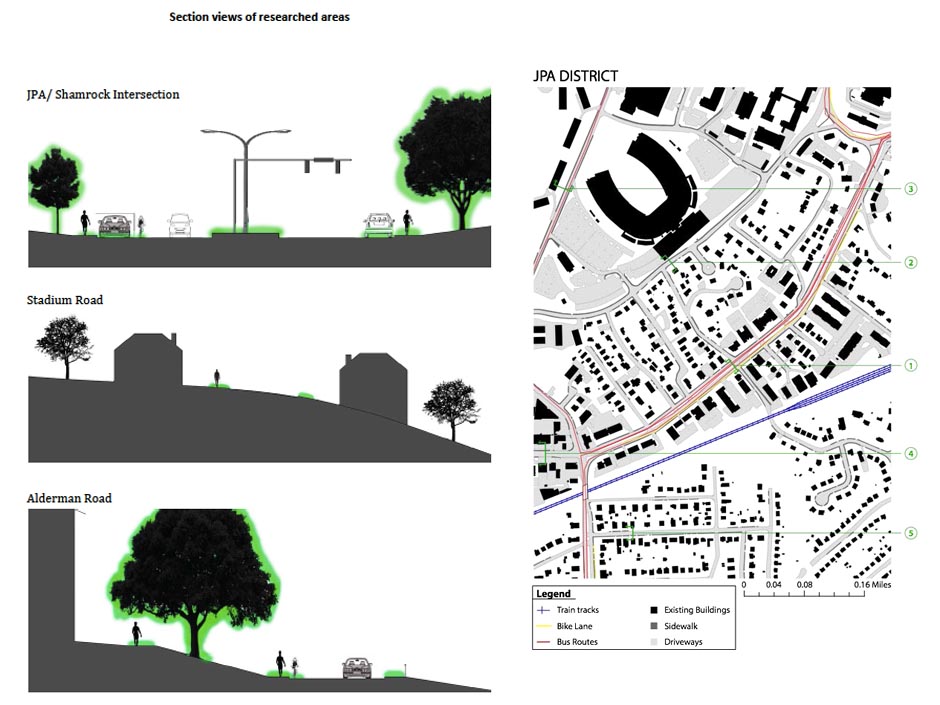Sustainable Places: JPA, Fry Springs
JPA_FrySprings (click PDF)
Spring 2013
Team members: Michelle Chen, Timothy Edwards, Neguiba Eslaquit, Ryan Hess, AJ Peters
Our team is focused on JPA and Fry Springs area. Our main objective is to analyze the area and assess its relative sustainability. However, because it may be difficult to assess if the entire space taken into consideration is sustainable as a whole, we will focus on particular locations in this district and analyze what characteristics of sustainability they present. This will help us compare different environments and sustainable characteristics to evaluate why some implementations work in some areas and why they do not in others. We have decided to establish a middle point on Jefferson Park Avenue and then move on opposite directions, selecting sections to carefully consider. Our middle point is located at the intersection of Shamrock and JPA. Moving north we selected a section of Stadium Road, and further north a section of Alderman Road. Opposite those we will move south and west, focusing on a part of Robertson Road to the south, and on the shopping area of Fry Springs to the west. These points were not chosen without reason; JPA/Shamrock Intersection was chosen because we think it serves as an accurate middle point to the entire JPA area and it could be considered the most dense portion of the district with respect to traffic, pedestrian activity, and the built environment. Our choice of the Fry’s Spring portion was because it is the only commercial area on JPA. The Alderman Road part of our analysis was chosen because of its proximity to first year dorms, and thus its direct contact with the University of Virginia’s student body. Finally, we chose the Stadium Road and Robertson portions because we believe they represent a different kind of residential community that are not necessarily UVA students.
Since sustainability is a broad term, we will target specific points that we find important regarding the area. To begin with, being that this district mainly serve a university community, it is essential to evaluate how safe they are. In particular, we are considering the lighting of the streets and the criminal activity that is reported. At the same time, we are working on examining the livability of these areas with a focus on the ecology. This means that we are looking at the spaces in terms of green areas and how appealing the buildings appear to those who inhabit the area. This last point also leads us to the analysis of walkability in the area and the variety of transportation it offers (sidewalks, bike lane, bus lane, traffic lane). This walkability is also related to block length and proximity to major destinations such as UVA, the Corner, and the Health Center.
With these tools we have evaluated portions of JPA on terms of sustainability and we have constructed the following report using all the information gathered so that this analysis can be delivered to the PLACE Design Task Force to inform them of the current state of the area.

